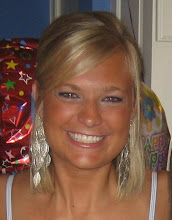Throughout chapter 2 Bachelard really puts into perspective how important it is to look at things as indivual units but make sure to think of things in the grand scheme. a drawer + a dresser + a room + a house + the lot + the universe. When looking design, and objects in that sense, I really start to understand the [roots charrette] because it was an item that we took, magnified, and put the magnified piece of the object into perspective with its surroundings, studied it and then placed the small piece into the universe. Anyway- in chapter 2 Bachelard is relaying how an object is placed in the universe and how it related to the environment. The quote on pg. 38, "Isn't it true that a pleasant house makes winter more poetic, and doesnt winter add to the poetry of a house?" Really started to put my mind in the right spot for this chapter. It is true. If you live in a comfortable, pleasant house, it makes winter less cold, and less miserable. When a space is inviting you dont want to leave it, you want to stay confined in the space and enjoy it. Bachelard goes on in this chapter poetically speaking about how the space and universe shouldn't be two juxtaposed objects, they should correlate with eachother, helping and "awakening" each other.
The scene Bachelard paints for us when speaking about a horrible storm and a house battling each other, brought me back to the first chapter where he talks about attic + cellar and how as a class we discussed how each of them meant a different variety of safety to us. Going off of that, our homes are our shelters, our safety nets, they are what we hide in during a storm, to keep us and protect us from bad, we ask it to battle the natural disasters, and for the most part, they do protect us. When I was reading the description of the storm and the house and that battle, I instantly thought of our institutional project and how we as designers now have the opportunity to provide the students with a safe shelter and home, one in which they feel safe to educate, teach and be themselves in. I want to achieve all that in the institutional building as well as a space where they can daydream, interact with and creatively think about the space that surrounds them, together all of these opportunities and objectives can allow students to grow stronger.
3[drawers + chests + wardrobes]
a quick note about chapter 3..
I found it interesting when bachelard spoke about how dressers, the drawers with it, the knobs on it, all have a part of intimacy like us humans. The shelves, in a closet- they lack privacy when the doors are open, the items inside are exposed and open for viewing. How do we as designers face the opportunity to work with public vs. private, solids vs. voids - especially in a space like an educational area?








